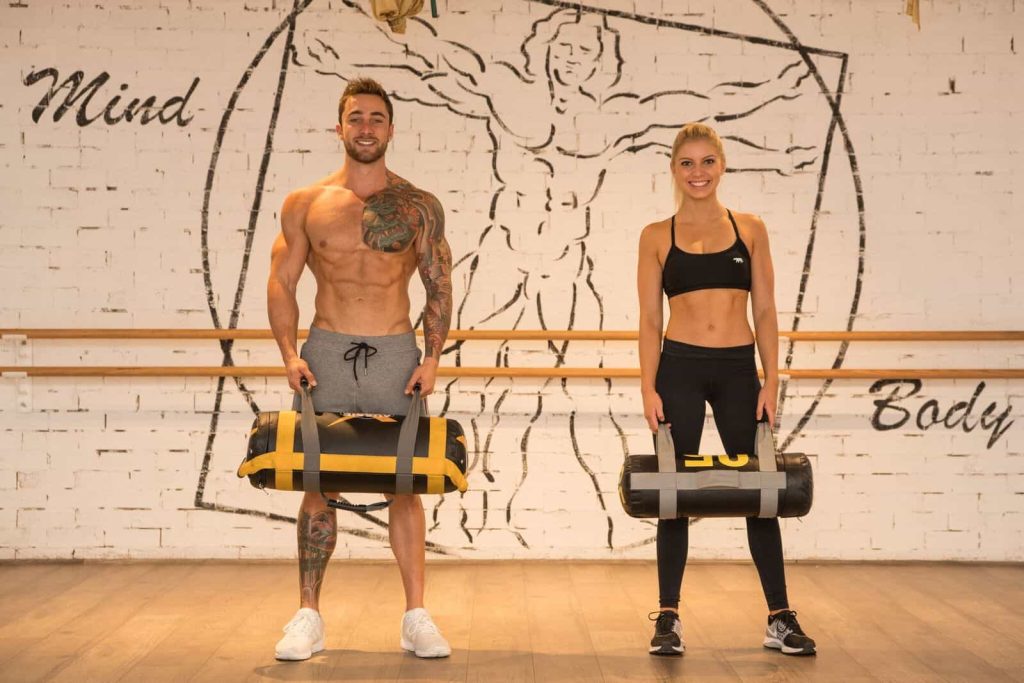When starting a Powerbag exercise program the first stage is all about stability and controlling the desired movement. You will notice that our exercise selection starts with basic kneeling hip extension on the floor and using a very lightweight. Therefore developing high levels of skill within the system.
Hip extension is fundamental in the use of the Powerbag and the relevant progressions should be applied to anyone wishing to use them. Acquiring the correct movement pattern will ultimately set you up for success in the future when moving on to more complex and higher loads.
The program you put together should acknowledge your starting level of fitness, and should lead you from that start point to where you reach both your training goals and the end goals which initially made you decide to launch into an exercise program.
In effect this means that your training program should take into account where you are in terms of fitness at all times, your program should be progressive, so that as your fitness improves your program becomes progressively harder. Finally, your program should be as safe as possible. This viewpoint acknowledges that any training that you do will have a degree of risk attached to it, however in order to justify the risk, the potential benefits must outweigh those risks. In real terms, at least some and ideally all of the following conditions will be satisfied. A training program will result in increased levels of fitness, increased ability to do the things that you wish to do (sporting or otherwise), allow you to maintain a level of performance for a longer time and reduce your risk of injury. You may also experience some psychological benefits from following an appropriate training program.
Conversely, exercise that inappropriately stresses the body is likely to result in unwanted effects. Exercise that is carried out at too low an intensity is unlikely to result in any of the physical or psychological benefits available, whereas exercise carried out at a high intensity with insufficient time allocated to rest and recovery is likely to result in either physical breakdown or a series of unwanted psychological effects often linked with overtraining.
It is also worth remembering that the capacity of the individual to deal with exercise will vary according to the current state of health, recovery levels from the previous session, amount of rest, outside stressors that are being dealt with.
During this discussion we have only really talked about the exercise itself. However there is a fundamental principle of exercise that should be discussed briefly. In essence, the body (and mind) benefits from exercise by exercise acting as a stressor, putting new or increased demands on the self. In order to cope with these stressors, adaptations take place. There are a number of key points to be observed here, firstly the adaptations are physiological, psychological and movement orientated (biomechanical). Secondly if the stressor is too small the system will be able to deal with it in its current state and thus no adaptation will be required, in a nutshell there will be no training effect. Now this may be fine if your reasons for exercising are simply to spend a little bit of time away from the general doings of life and what you are really looking for is a little meditation time and to burn a few additional calories. However if you also desire some physical and physiological changes to occur, then make sure that the intensity of exercise creates a demand on your system that means some adaptation will take place. In simple English it means that what you are doing will be quite or very hard for at least some of the time.
For for Newsletter

